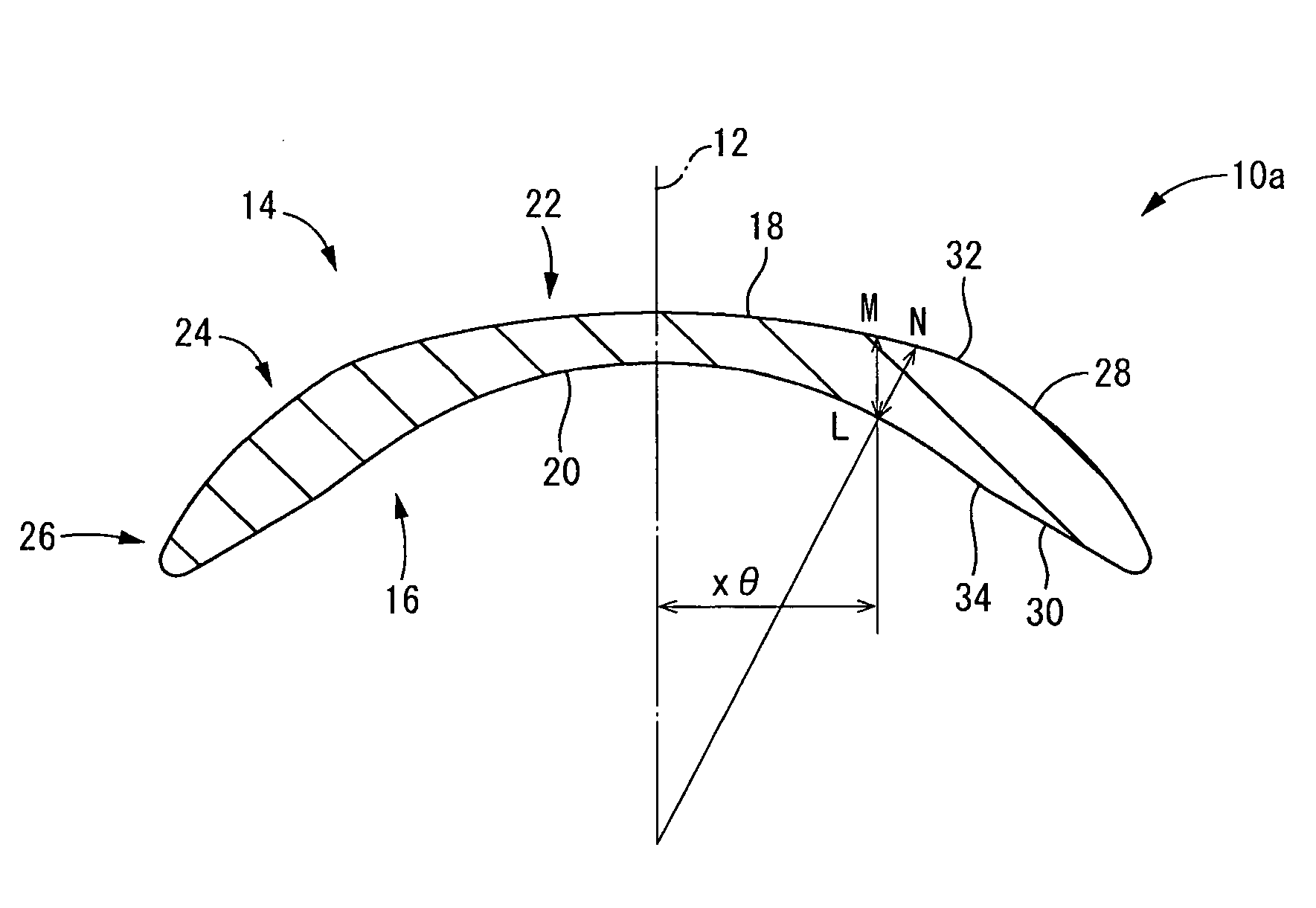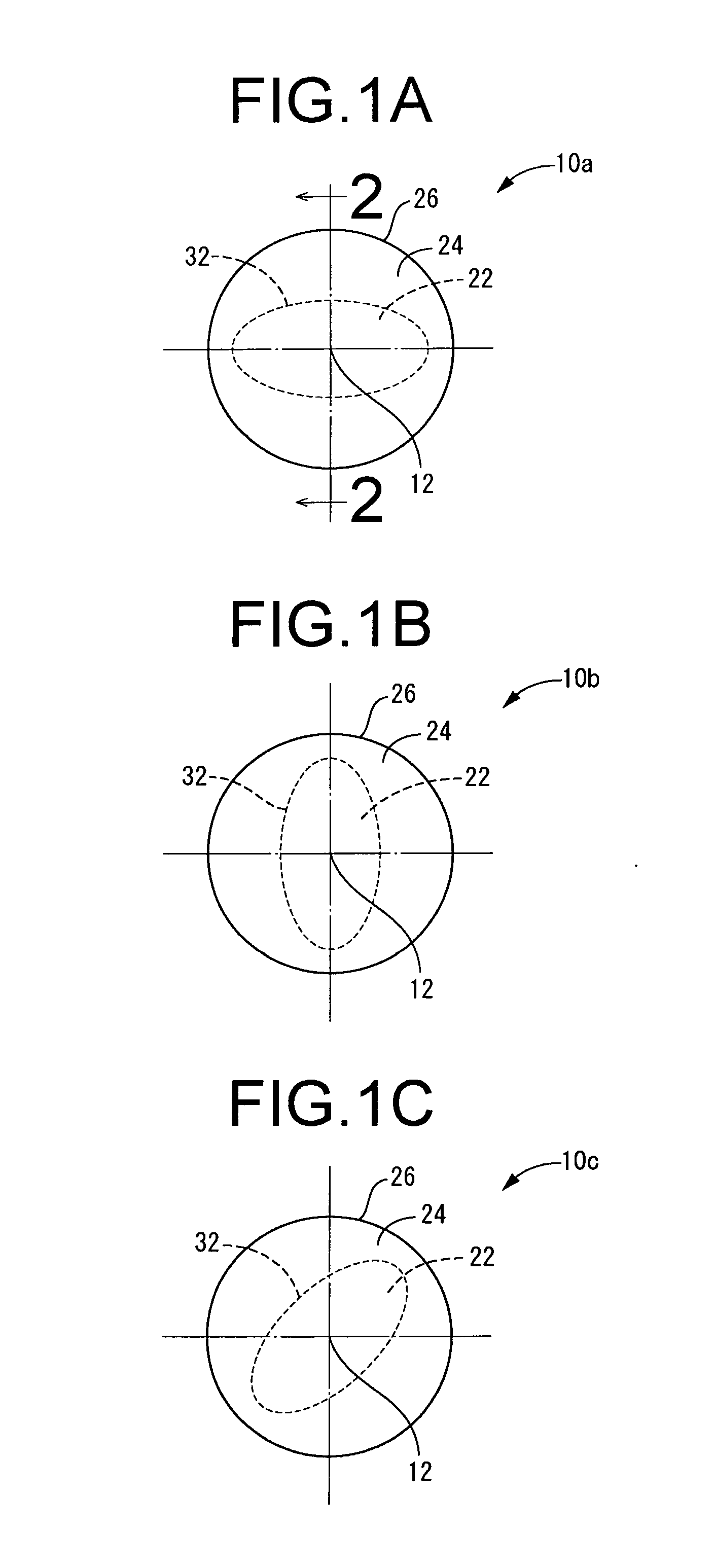Contact lens and method of manufacturing the same
a technology of contact lens and manufacturing method, which is applied in the field of contact lens, can solve the problems of poor circumferential stability, more difficult to achieve good wear comfort and circumferential stability, and inability to achieve the desired level of wear comfort and circumferential stability, and achieve the effect of high degree of accuracy and desired wear comfort and stability
- Summary
- Abstract
- Description
- Claims
- Application Information
AI Technical Summary
Benefits of technology
Problems solved by technology
Method used
Image
Examples
Embodiment Construction
[0054]A fuller understanding of the present invention will be provided through the following detailed description of the preferred embodiments of the invention, with reference to the accompanying drawings.
[0055]First, FIGS. 1A, 1B and 1C depict a plurality of contact lenses 10a, 10b, 10c selected appropriately from a contact lens series as a first embodiment of the present invention. The series of contact lenses is composed of a combination of several contact lenses whose optical zones 22 (discussed later) have mutually different optical characteristics, e.g. different cylindrical axial angle settings in the case of the present embodiment. Based on an examination of the optical system of the eye of the wearer, the examiner, e.g. an ophthalmologist, will select from the plurality of contact lenses one appropriate lens having optical characteristics appropriate for the wearer, for provision to the wearer.
[0056]The individual contact lenses 10a, 10b, 10c that are elements making up the...
PUM
 Login to View More
Login to View More Abstract
Description
Claims
Application Information
 Login to View More
Login to View More - R&D
- Intellectual Property
- Life Sciences
- Materials
- Tech Scout
- Unparalleled Data Quality
- Higher Quality Content
- 60% Fewer Hallucinations
Browse by: Latest US Patents, China's latest patents, Technical Efficacy Thesaurus, Application Domain, Technology Topic, Popular Technical Reports.
© 2025 PatSnap. All rights reserved.Legal|Privacy policy|Modern Slavery Act Transparency Statement|Sitemap|About US| Contact US: help@patsnap.com



